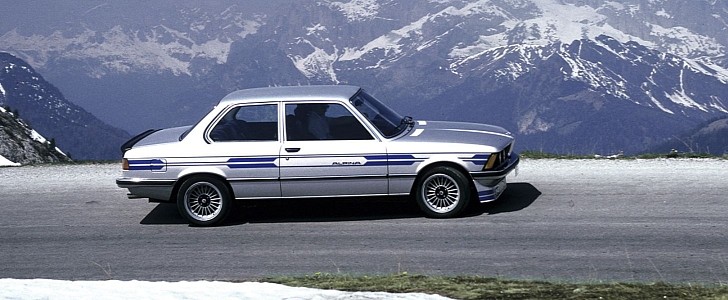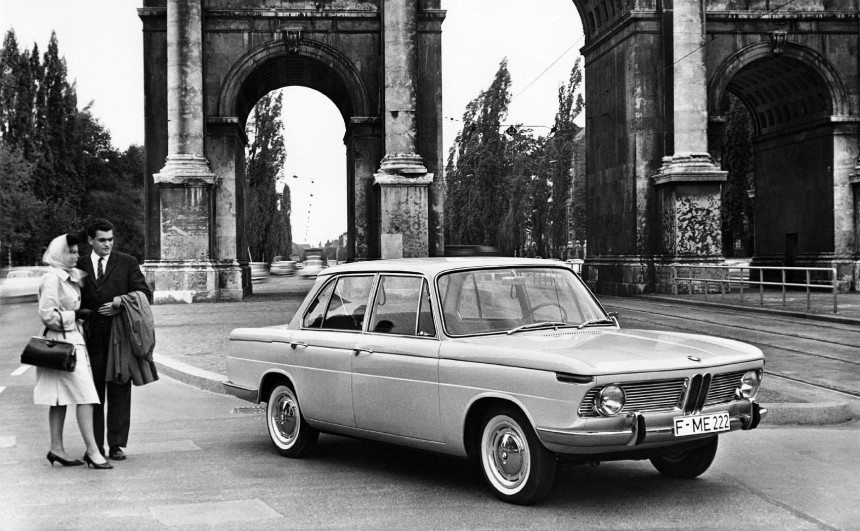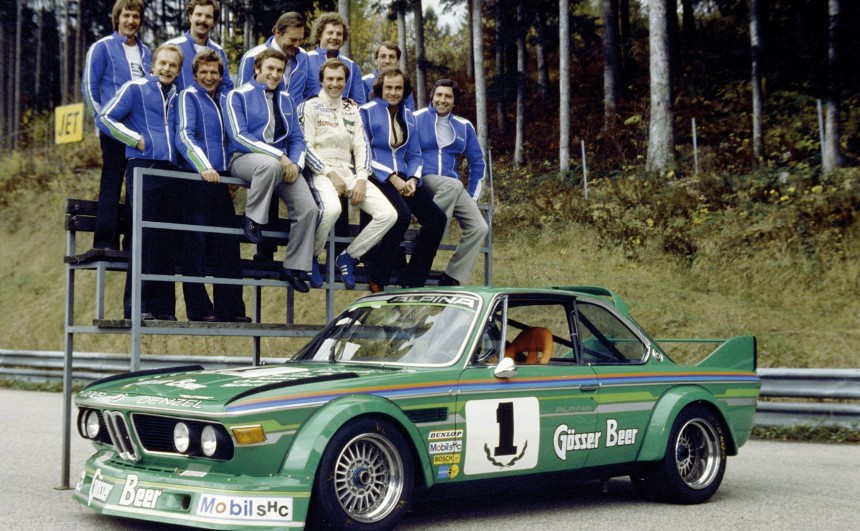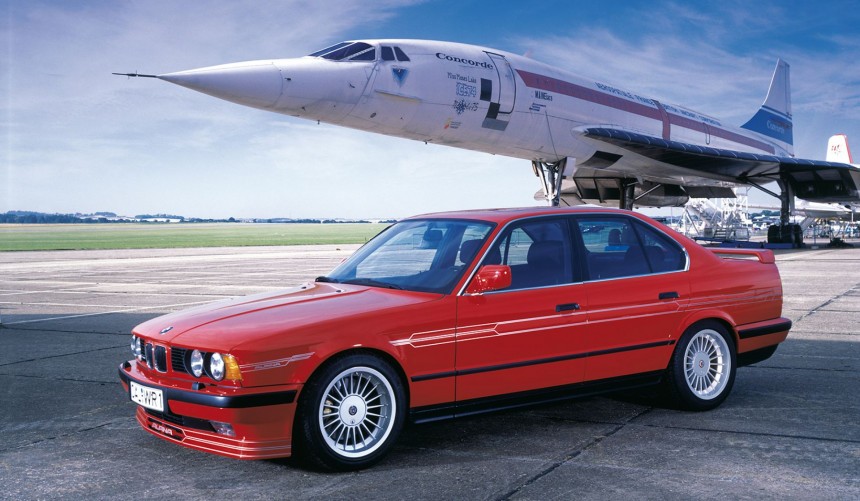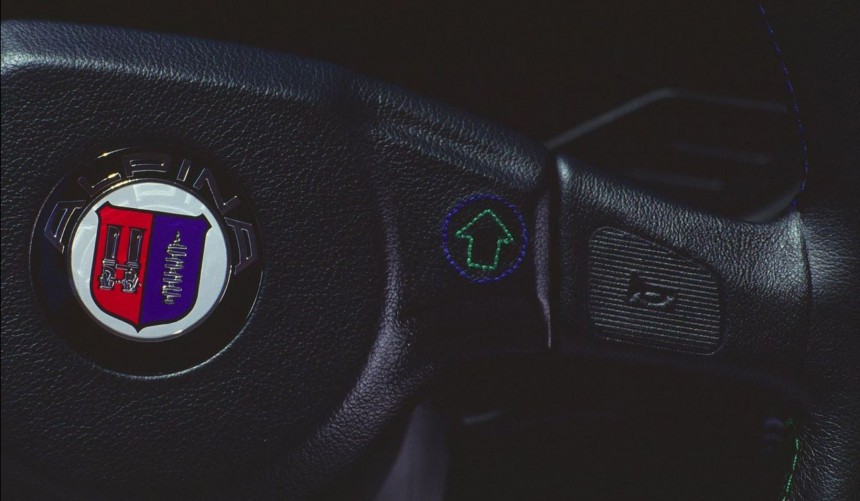In the early 1960s, a wealthy BMW owner who wanted more power out of his 1500 added dual-Weber carbs to its engine. The feat would attract the Bavarian automaker's attention and transform his typewriter business into one of the most renowned bespoke automotive manufacturers in the world.
The year was 1962, and the man responsible for this success story is Burkard Bovensiepen, who at the time was a young engineering student. At the time, he had no intention of going into his family’s typewriter business and instead used all the free time he had to make his BMW 1500 go faster.
He convinced his father to let him use a small outhouse on the company’s premises to work on the car and began modifying its engine. He swapped the stock Solex carburetor with dual-Weber carbs, which enabled the car to accelerate from 0 to 60 mph (0-96 kph) in 13 seconds, three seconds faster than it was capable of with the factory carb.
Two years later, as the family’s typewriter business encountered difficulties, Bovensiepen arranged a meeting with the BMW sales boss Paul G. Hahnemann and convinced him that he could set up a business that would upgrade the carmaker’s standard models to make them more desirable.
By February 1965, Alpina became a certified BMW tuner, and its modified cars were backed by the full factory warranty. The company started with eight employees, and in less than five years, that number grew to seventy, as it relocated from the small factory in Kaufbeuren to a larger plant in Buchloe.
Initially, they modified carburetors and crankshafts to improve BMW engines' performance, components which eventually inspired the company's logo introduced in 1967.
Between 1968 and 1977, Alpina constantly competed in various forms of motorsport on the Old Continent. During this period, the company’s racing team employed legendary drivers such as Derek Bell, Harald Ertl, James Hunt, Jacky Ickx, Nikki Lauda, or Hans Stuck.
Their most successful year was 1970, when the team won the European Touring Car Championship, the German Hillclimb Championship, and the legendary Spa 24 Hours endurance race.
Their road car business flourished, and in 1978, Alpina introduced three cars, the B6, B7 Turbo, and B7 Turbo Coupe, all of which were fitted with a world-first fully electronic, computerized ignition system.
Five years later, the German Ministry of Transport officially recognized Alpina as an automobile manufacturer, and in 1988, the company officially withdrew from racing because of capacity limitations and restrictions. From then on, Alpina focused all its efforts on building the ultimate high-performance daily drivers.
In 1989, the company started production of the Alpina B10 BiTurbo, a high-performance version of the BMW 5 Series E34.
Apart from the bespoke exterior and interior upgrades, the car’s heavily modified engine featured forged Mahle pistons, two Garrett T25 water-cooled turbochargers, and a new performance camshaft.
The result was 355 hp and 384 lb-ft (520 Nm) of torque at 4,000 rpm, making it the fastest production sedan in the world at the time.
In 1993, the company introduced the Switch-Tronic transmission, which enabled drivers to shift gears using shift buttons integrated into the steering wheel, becoming the first manufacturer to implement this idea on a production car.
Another milestone for Alpina is the electrically heated, metal catalytic converter, the Super-Cat that debuted in 1995 on the B12. Developed through a joint venture with BMW and Emitec, it is the first such component to make it into series production.
Many other high-performance vehicles with cutting-edge technologies followed. In present times, the company has a wide range of models that includes crossovers and SUVs like the XD3, XD4, and the XB7.
Recently, Alpina unveiled its latest creation, the 612-hp B8 Grand Coupe, an Autobahn-shredding monster capable of reaching a top speed of 201 mph (324 kph).
For over half of century, the company has been transforming stock BMWs into bespoke works of automotive art. We can't help but applaud Mr. Bovensiepen’s decision to abandon typewriter development in favor of performance cars. His example proves that following our passion can lead to great things both for ourselves and for those around us.
He convinced his father to let him use a small outhouse on the company’s premises to work on the car and began modifying its engine. He swapped the stock Solex carburetor with dual-Weber carbs, which enabled the car to accelerate from 0 to 60 mph (0-96 kph) in 13 seconds, three seconds faster than it was capable of with the factory carb.
By February 1965, Alpina became a certified BMW tuner, and its modified cars were backed by the full factory warranty. The company started with eight employees, and in less than five years, that number grew to seventy, as it relocated from the small factory in Kaufbeuren to a larger plant in Buchloe.
Initially, they modified carburetors and crankshafts to improve BMW engines' performance, components which eventually inspired the company's logo introduced in 1967.
Between 1968 and 1977, Alpina constantly competed in various forms of motorsport on the Old Continent. During this period, the company’s racing team employed legendary drivers such as Derek Bell, Harald Ertl, James Hunt, Jacky Ickx, Nikki Lauda, or Hans Stuck.
Their most successful year was 1970, when the team won the European Touring Car Championship, the German Hillclimb Championship, and the legendary Spa 24 Hours endurance race.
Five years later, the German Ministry of Transport officially recognized Alpina as an automobile manufacturer, and in 1988, the company officially withdrew from racing because of capacity limitations and restrictions. From then on, Alpina focused all its efforts on building the ultimate high-performance daily drivers.
In 1989, the company started production of the Alpina B10 BiTurbo, a high-performance version of the BMW 5 Series E34.
The result was 355 hp and 384 lb-ft (520 Nm) of torque at 4,000 rpm, making it the fastest production sedan in the world at the time.
In 1993, the company introduced the Switch-Tronic transmission, which enabled drivers to shift gears using shift buttons integrated into the steering wheel, becoming the first manufacturer to implement this idea on a production car.
Many other high-performance vehicles with cutting-edge technologies followed. In present times, the company has a wide range of models that includes crossovers and SUVs like the XD3, XD4, and the XB7.
Recently, Alpina unveiled its latest creation, the 612-hp B8 Grand Coupe, an Autobahn-shredding monster capable of reaching a top speed of 201 mph (324 kph).
For over half of century, the company has been transforming stock BMWs into bespoke works of automotive art. We can't help but applaud Mr. Bovensiepen’s decision to abandon typewriter development in favor of performance cars. His example proves that following our passion can lead to great things both for ourselves and for those around us.
